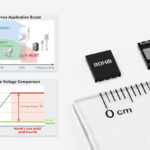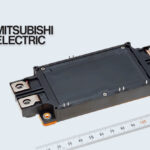ASIA ELECTRONICS INDUSTRYYOUR WINDOW TO SMART MANUFACTURING
Vitesco Technologies, ROHM Agree on SiC Supply Deal
Vitesco Technologies has secured strategically important capacities in energy-efficient silicon carbide power semiconductors through a long-term supply partnership with ROHM Co., Ltd. Accordingly, the deal will cover worth over US$1 billion until 2030.
The development partnership with ROHM, which began in 2020, created the basis for the supply partnership now signed in Regensburg.
Vitesco Technologies’ advanced inverters with integrated ROHM SiC chips will be adopted by two customers, to be applied inside electric vehicle powertrains. Furthermore, Vitesco Technologies will start supplying a first series project as early as 2024. Thus, the company is ahead of the originally targeted timeline.

Key Technology in Diverse Applications
SiC devices enable the design of particularly efficient power electronics, such as those needed for electric car inverters. SiC chips are a key technology, particularly for high voltages and for vehicles with demanding range targets and optimum overall efficiency. Moreover, during the existing development partnership with ROHM the relevant SiC chips were further optimized for use in automotive inverters starting in 2024.
Andreas Wolf, CEO of Vitesco Technologies said the supply partnership agreement with ROHM is an important building block. Particularly, for securing Vitesco Technologies’ SiC capacities in the years ahead.
In addition, Wolf said, “We have had very good experience in our development cooperation so far and are now looking forward not only to continuing it, but also to intensifying it further.”
“In the high-growth automotive market, SiC is a pathfinder for higher efficiency. With an expected higher market share of more than 30 percent, we are strongly positioned here and have gained a strategic partner in Vitesco Technologies for further market penetration,” said Dr. Kazuhide Ino, Member of the Board, Managing Executive Officer and CFO of ROHM Co. Ltd. at the signing ceremony.
Small Cause – Big Effect
Silicon carbide belongs to the so-called wide bandgap semiconductors, whose wide bandgap enables lower electrical resistance, fast and low loss switching chips for power electronics. Simply put, the wide bandgap refers to the energy gap between the non-conductive state and the conductive state of the electrons in the material.
At the same time, SiC chips are more thermally resistant, so that the power density of electronics can be increased.
Thanks to these features, SiC electronics have reduced conversion losses compared to conventional silicon (Si). Especially at high voltage levels such as 800 V, SiC inverters are more efficient than Si models. Since 800 V is the prerequisite for fast and thus convenient high-voltage charging, SiC devices are at the beginning of a worldwide boom. Reduced conversion losses in the inverter are also significant for the overall efficiency of electric driving and thus for range. Competition for sufficient capacities in components made of this high-tech material is correspondingly fierce.




